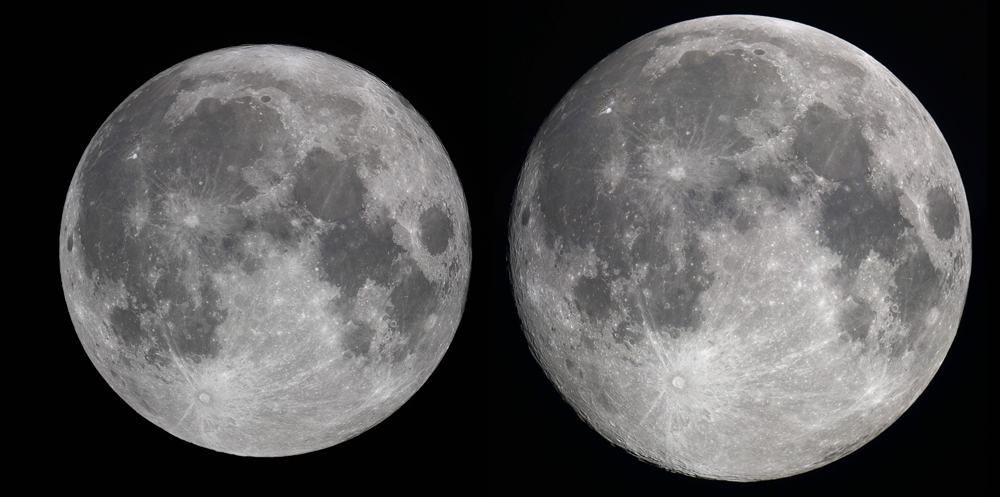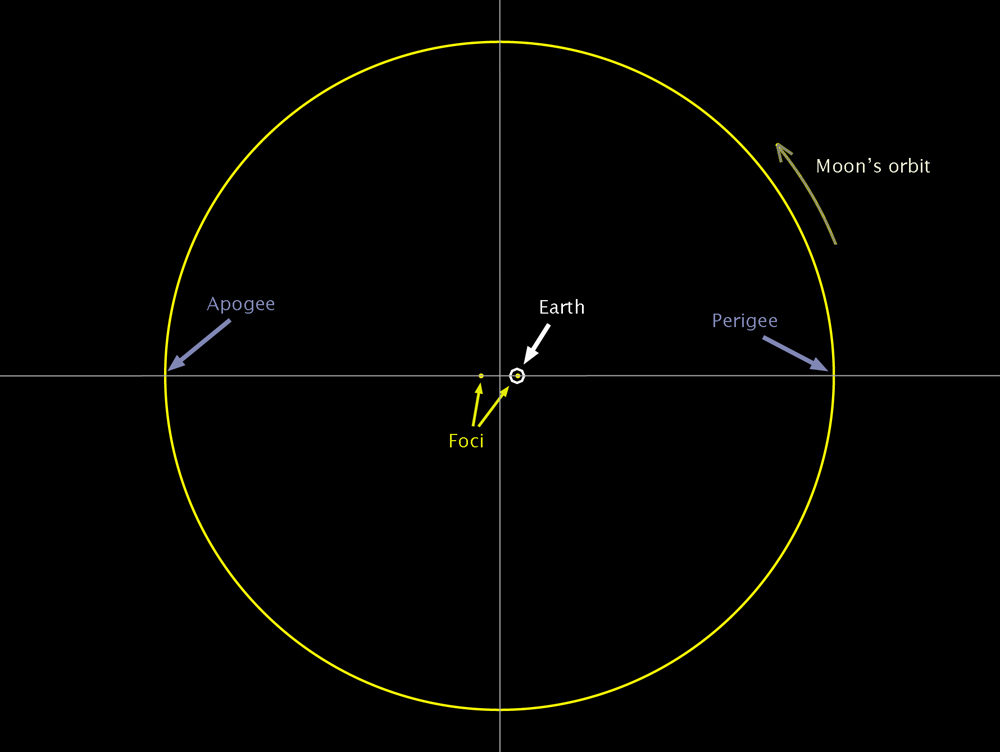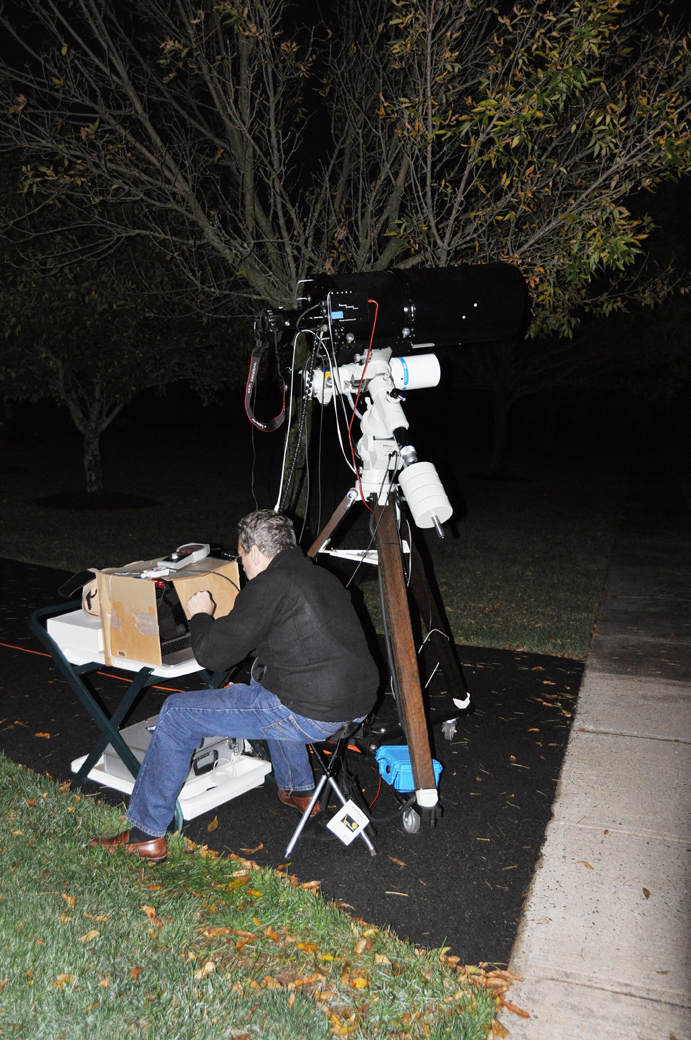
Supermoon vs. Minimoon: Sizing Up Earth's Satellite

Robert Vanderbei is a professor in the Department of Operations Research and Financial Engineering at Princeton University and co-author, with J. Richard Gott, of the National Geographic book "Sizing Up the Universe" (National Geographic, 2010). Vanderbei has been an astrophotographer since 1999, and he regularly posts new images on his astro gallery website. Vanderbei contributed these images to Space.com's Expert Voices: Op-Ed & Insights.
The so-called "supermoon" has an impressive name, but just how super is the actual event? Taking the true measure of the supermoon means following Earth's satellite at different points on its trip around the planet.
The moon's orbit about the Earth is not a perfect circle. It is, however, close to being a perfect ellipse, or a circle that has been slightly squished. Instead of lying at the center of that ellipse, the Earth lies at one of its two foci — hence, as the moon orbits the Earth, about half of the time it is a little closer to the planet, and half the time it is a little further away. [Take Stunning Moon Shots, From Your Driveway (Gallery )]
The point of closest approach during an orbit is called the perigee, whereas the greatest separation is called the apogee. On average, the moon's distance from Earth is 239,228 miles (385,000 kilometers). At perigee, it's 221,643 miles (356,700 km) away, and at apogee, it is a bit farther away, at 252,463 miles (406,300 km).

Enter the supermoon
A supermoon occurs when the moon is both full and near to perigee (i.e., close to Earth). That's because the moon looks a little bit bigger than it normally does, being a little bit closer than it typically is.
Supermoon events have been popular in the news media in recent years, but how much bigger is a supermoon? Full moons, just by their appearance, always look impressive —so it's hard to know at first glance if a supermoon is really bigger, visually, than an average full moon.
One way to get a true sense of scale for the size variation is to take a picture of a supermoon, and then about six months later, take another picture of a full moon when the satellite is near its apogee. At that stage, the moon is about as far away as it ever gets, when it will have the smallest apparent size. If the exact same camera and telescope are used, then the two pictures placed side by side will clearly illustrate the difference in apparent size.
Get the Space.com Newsletter
Breaking space news, the latest updates on rocket launches, skywatching events and more!
The full moon on the night of Aug. 9, 2014, was a supermoon event, providing a good opportunity to use this method.
The skies were clear, and the moon was only 353,615 km (220,000 miles) away — as measured from my home on the U.S. east coast, which was about 5,000 km (3,100 miles) closer to the moon than the center of the Earth at the time of picture taking.
For the supermoon photo, I captured the image at exactly 11:30 p.m. EDT using a Canon XSi (450D) on my 10-inch Ritchey-Chretian from RC Optical Systems capturing five 4-panel mosaics. I used various exposures at ISO 200 and 800.

Minimoon rising
Six months later, on Feb. 3, 2015, there was another full moon — this time, when the moon was near apogee. On that night, the moon was 399,686 km (250,000 miles) away. At this point in its orbit, the moon appears smaller, thus earning the name minimoon.
With some careful planning and forethought, I managed to use the exact same camera and telescope to take both pictures from my driveway.
For the minimoon photo, I captured the image at exactly 10:09 p.m. EST using the same Canon XSi (450D) on a 10-inch RC. The image is a two-panel mosaic, each panel a stack of four images. Exposure was 1/250 sec at ISO 200.
With such a side-by-side comparison, like the one shown above, you can get a good idea of the relative apparent sizes of the two full moons. Measuring the diameters of the two images, it is easy to determine that the supermoon is a little bit more than 13 percent larger than the minimoon. That difference in size is, of course, completely consistent with the ratio of the apogee distance to the perigee distance.

A difference of 13 percent doesn't sound very impressive. Yet, the side-by-side pictures make the difference seem quite dramatic. Perhaps this visual effect can be explained by noting that the area of the supermoon is in fact 28 percent greater, as the area increases proportionally to the square of the diameter.
It is worth noting that the two faces of the moon seen in these two pictures don't match perfectly. This is because the moon's axis of rotation is not exactly perpendicular to its orbital plane. So, even though the moon's rotational period is almost precisely one month, the face seen on Earth wobbles a little over the course of a month, an effect called libration.
The next full moon will be well after midnight on the night of April 3, and, that full moon will be just three days after the moon passes its orbital perigee. In other words, it will be almost a full supermoon. And, if you live on the west coast of Hawaii or east Asia, that full moon will culminate with a total lunar eclipse. Those in Hawaii will get the best view — don't miss it.
Follow all of the Expert Voices issues and debates — and become part of the discussion — on Facebook, Twitter and Google+. The views expressed are those of the author and do not necessarily reflect the views of the publisher. This version of the article was originally published on Space.com.
Join our Space Forums to keep talking space on the latest missions, night sky and more! And if you have a news tip, correction or comment, let us know at: community@space.com.









